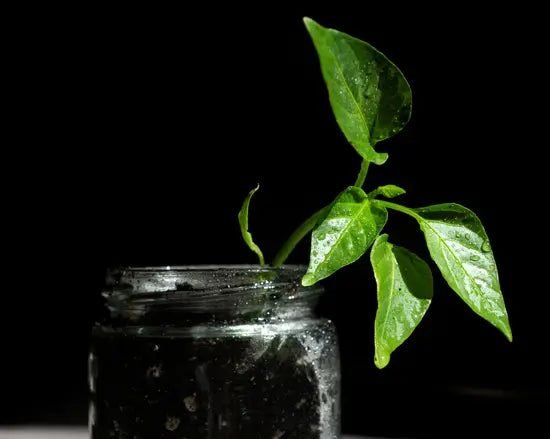EC stands for Electric Conductivity (mS/liter) and with that we measure the amount of (usable and unusable) salts in water.
Plants that grow and flower rapidly must have sufficient nutrients available.
To measure the nutritional value (actually the nutritional salts) you use an EC meter.The EC meter simply measures the amount of electrical resistance in water and that also explains why a medium like soil must be wet if one measures it.
An EC meter measures a total sum of all salts.
An EC of 0.1/100L from one brand of nutrition therefore does not have to have the same nutritional value as an EC of 0.1/100L of the other brand.
Most cheaper plant foods contain many elements such as chloride, cadmium and other heavy metals. The EC meter also measures these elements.
Cultivators who grow their crop by weight also try to get the plant to absorb as many nutrient salts as possible for a heavier end result. These nutrient salts must be available and absorbable and preferably balanced in such a way that it stimulates each other to be absorbed.
The best way to measure this in nft systems is by withdrawing some water from the medium with a syringe and then measuring it.
In hydroponic systems with a medium like for example Rockwool, it is the best to push the EC meter directly in the wet Rockwool.
For soil or coco, it is best to mix the mediums lightly with demi water in a cup and measure after soaking. It is not possible with normal water, because it count the EC of the water also.
Demi water you can buy at each gas station as water for batteries.

How much EC for plants?
Unambiguous (target) values for the number of nutrient salts in a solution are difficult to give.
The EC depends, among other things, on the size of the plant, the amount of water, the number of times you drip, the lighting, the natural EC of your tap water, temperature, humidity and the type of plant.
All this determines how much water and nutrition a plant needs.
The grower's preference also plays a role. There are growers who achieve excellent results with an 'irresponsibly' strong nutrient solution and others who also manage to reap an excellent harvest with a 'weak' solution.
In general it can be stated that a nutrient solution for young plants has an EC value of 1.0 to 1.3 mS and that this may increase to 2.0 mS for adult plants.
If the 'natural' EC of the tap water deviates much from the averages used by various brands of fertilizers (an average EC of 0.5 to 0.6 is assumed), then this difference in EC must be adjusted.
An example:
Grower A measures an EC of 0.5 in his tap water.
He wants to achieve an EC of 1.8 and therefore adds 1.3 EC of nutrients.
Grower B has harder water and measures an EC of 0.8 in his tap water. If he also wants to create an EC of 1.8, grower B only adds 1.0 EC of nutrients. That is 0.3 EC less than his fellow grower.
To provide as much nutrition as grower A, grower B must produce an EC of 2.1.
You can also assume that the EC in the slab may be half a point higher than in the dripping water.
The level of the EC value is also related to the number of drips.
A relatively high nutrient solution, for example with an EC of 2.7 spread over five drips of 500ml per plant, will cause fewer problems in the slab than a drip of 150 ml with the same solution, six times a day per plant.
In the latter case, the nutrient salts in the solution will evaporate, causing the EC in the slab to increase enormously. Those who prefer to drip more often should use a less strong nutrient solution.
In all cases, you need to know what the nutrient solution does in the medium. Therefore, depending on system, check the pH and EC of the drain water or directly in the medium every 2nd day.

